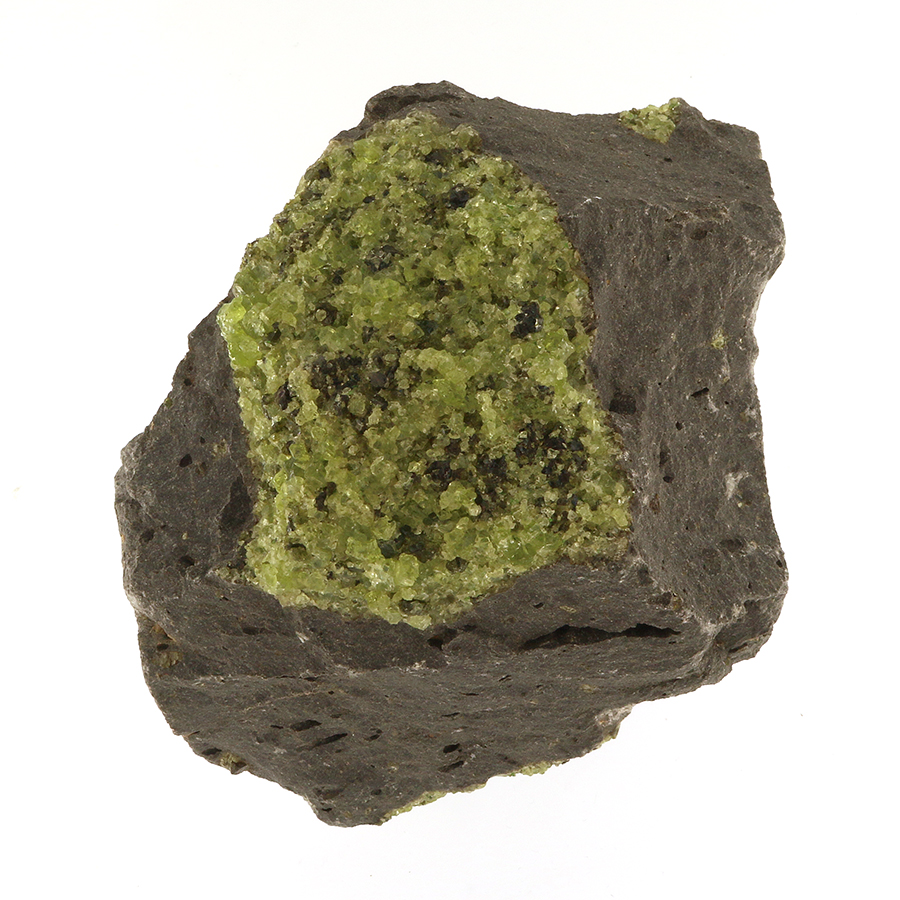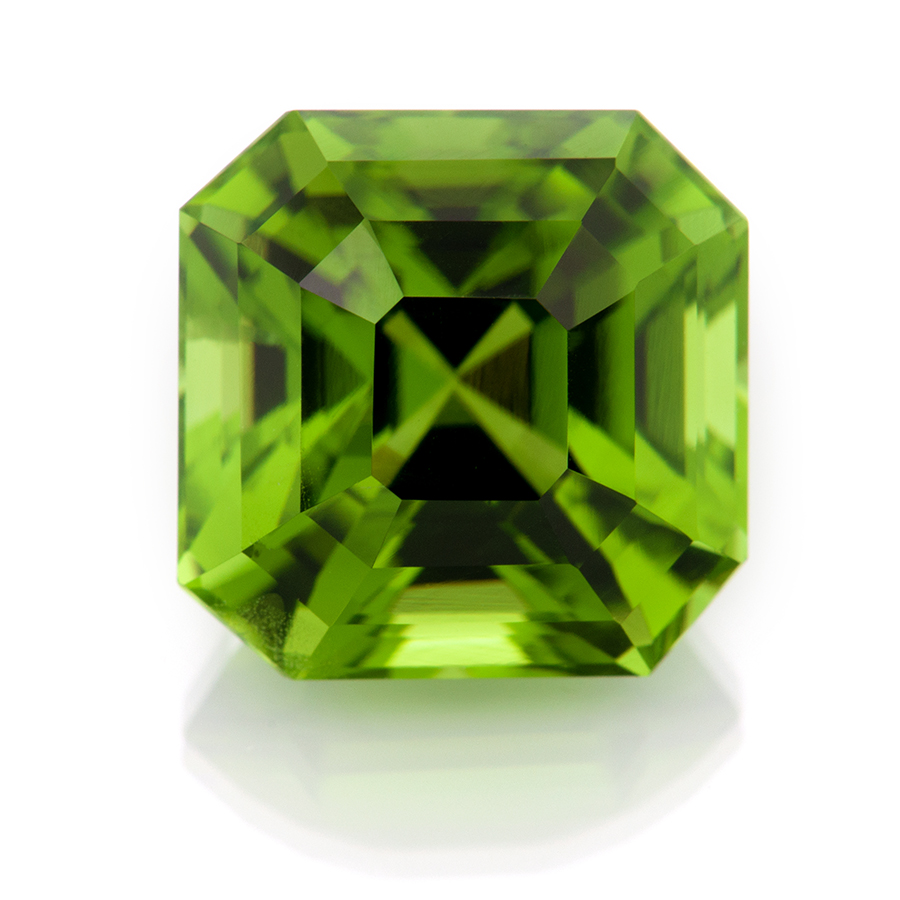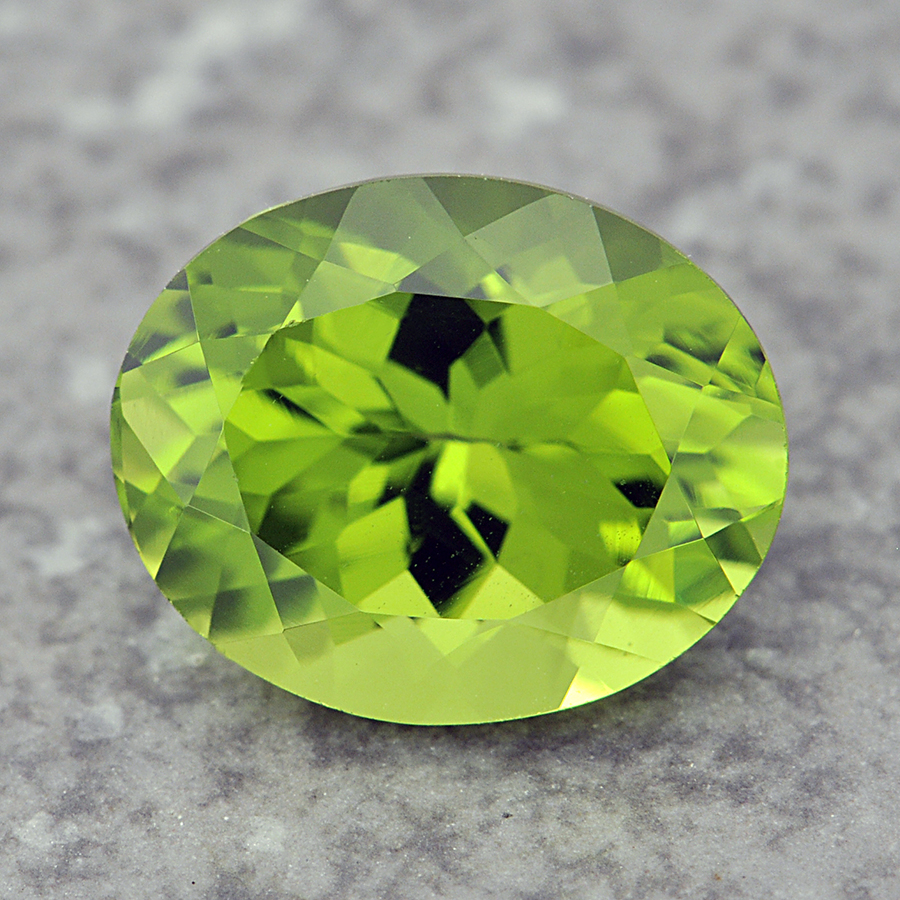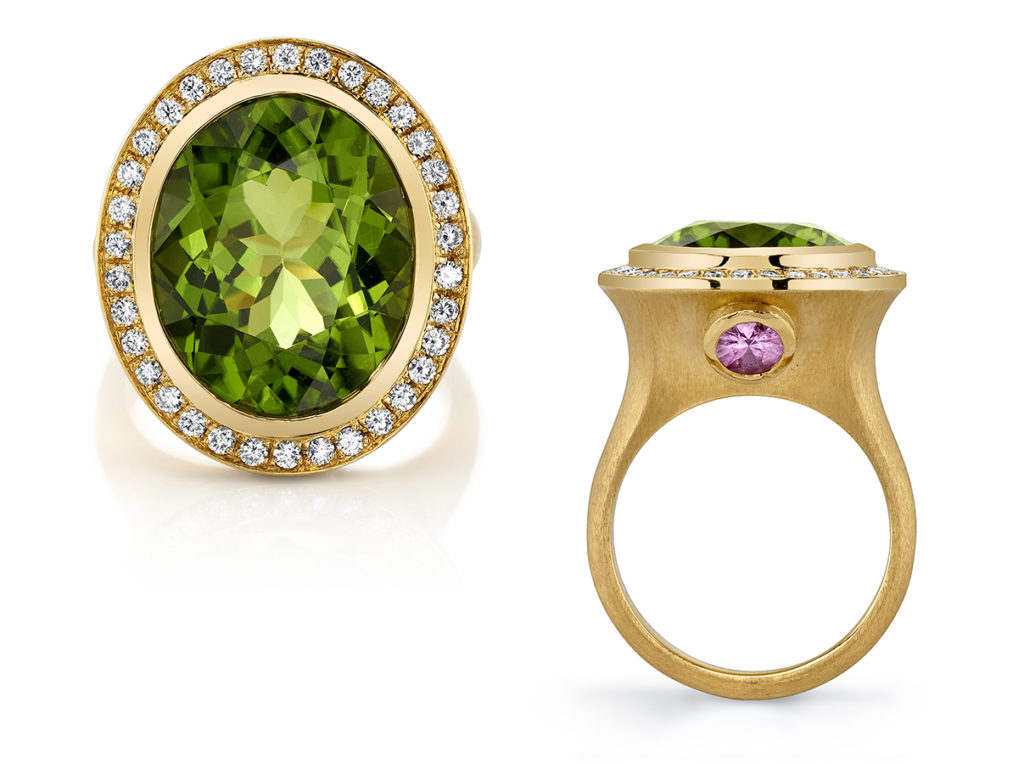-Sponsored Content-
Peridot...a Quintessential Gemstone
Wade Abel, CG, Director of Gemology, American Gem Society
We have seen the popularity of green gemstones recently. Trending because of celebrities’ green diamonds or just the fresh look of leaves in the spring. Peridot is a quintessential green gemstone with a rich history and is known for its striking hue and enchanting beauty.
Tiny crystals of peridot on volcanic matrix Image: American Gem Society

How is Peridot Formed?
Peridot is formed deep within the earth’s mantle, under conditions of intense heat and pressure. It belongs to the olivine mineral group and is composed of iron, magnesium, and silicate. As molten rock, magma, rises towards the earth’s surface, it may contain peridot crystals. Through volcanic activity or tectonic movements, these crystals can be brought to the surface. Peridot crystals can range in size from very tiny crystals found in clusters on volcanic matrix, to large crystals capable of being fashioned into faceted gemstones.
Where is Peridot Found?
One of the most prominent sources for Peridot is the San Carlos Apache Indian Reservation in Arizona, USA. Some other locations include Myanmar, China, Pakistan, and Tanzania. Each of these regions offers unique variations in color and quality. An important source is Egypt’s St. John’s Island (Zabargad), which had a historical significance.

6.89ct Square step-cut peridot Photo credit: Geoffrey Watt of Mayer & Watt
Historical Significance of Peridot
Peridot has been important throughout history and prized for centuries. Ancient Egyptians considered it the “gem of the sun” and believed it had protective powers. The close proximity the Egyptian source of peridot most likely provided Cleopatra, known for her love of gemstones, with these beautiful green gems. It is believed that Cleopatra’s emeralds may have actually been peridot. In more recent history, peridot gained popularity during the Art Nouveau period, becoming a favored gemstone for jewelry designers to capture the beauty of nature.
3.28ct Oval brilliant peridot Photo credit: Geoffrey Watt of Mayer & Watt

The Vibrant Color of Peridot
Peridot exhibits a wide range of green hues. One of the most desirable shades is a pure, vivid green with a hint of yellow, reminiscent of spring foliage. However, peridot can also exhibit olive-green or lime green.The range of green color seen in peridot is a result of its basic chemical composition. As mentioned previously, peridot is composed of iron, magnesium, and silicate. The presence of iron within the crystal structure creates the characteristic green hue.
In jewelry, peridot complements both yellow and white metals. Its bright vibrant hue pairs nicely with diamonds or other colored gemstones making design possibilities vast.
Durability, Treatments, and Care
Peridot has a hardness of 6.5 to 7 on the Mohs scale, durable enough for everyday wear. However, it is important to provide care instructions to protect peridot from scratches and like most colored gemstone jewelry, avoid exposure to harsh chemicals. Peridot is usually not treated, however occasionally is enhanced with resins, waxes, or oils to fill fractures or surface cavities. Care should be taken when cleaning and peridot is never to be placed in an ultrasonic cleaner. Of course, all treatments must be disclosed.
Peridot encompasses a wide range of bright green hues and rich history. Its historical significance and suitability for jewelry make it a gemstone loved by many, especially by those that enjoy making a bold statement with the vibrant green hue. The story of peridot combined with its beauty make this a gemstone that will continue to endure.

11.81 ct. Oval peridot in 18k yellow gold with 2.10 total carat weight of pink sapphires and diamonds Image courtesy of Omi Privé, omiprive.com
The American Gem Society (AGS) Diamond Grading Standards have provided a common language for evaluating diamond quality among AGS members and diamond buying consumers. These standards were provisional when first published in 1966 and approved by the AGS members in 1975. To this day, AGS titleholders have the ability to assess diamonds with these standards. From 1996 through 2022, the AGS Laboratories applied the AGS Diamond Grading Standards in nearly all the reporting. In the early 2000s, the cut grade standard evolved, incorporating Light Performance, and creating a way to describe and predict how light acts in the diamond. This became a catalyst for manufacturers to focus on diamond cut and work toward the AGS Ideal®. Concerns arose with the closure of the lab that programs built around this cut grade would not have continued options for differentiation integral to their marketing. Luckily, with the strengthened collaboration between AGS and GIA, the AGS Ideal® continues to be available with the AGS Ideal® Report by GIA.


